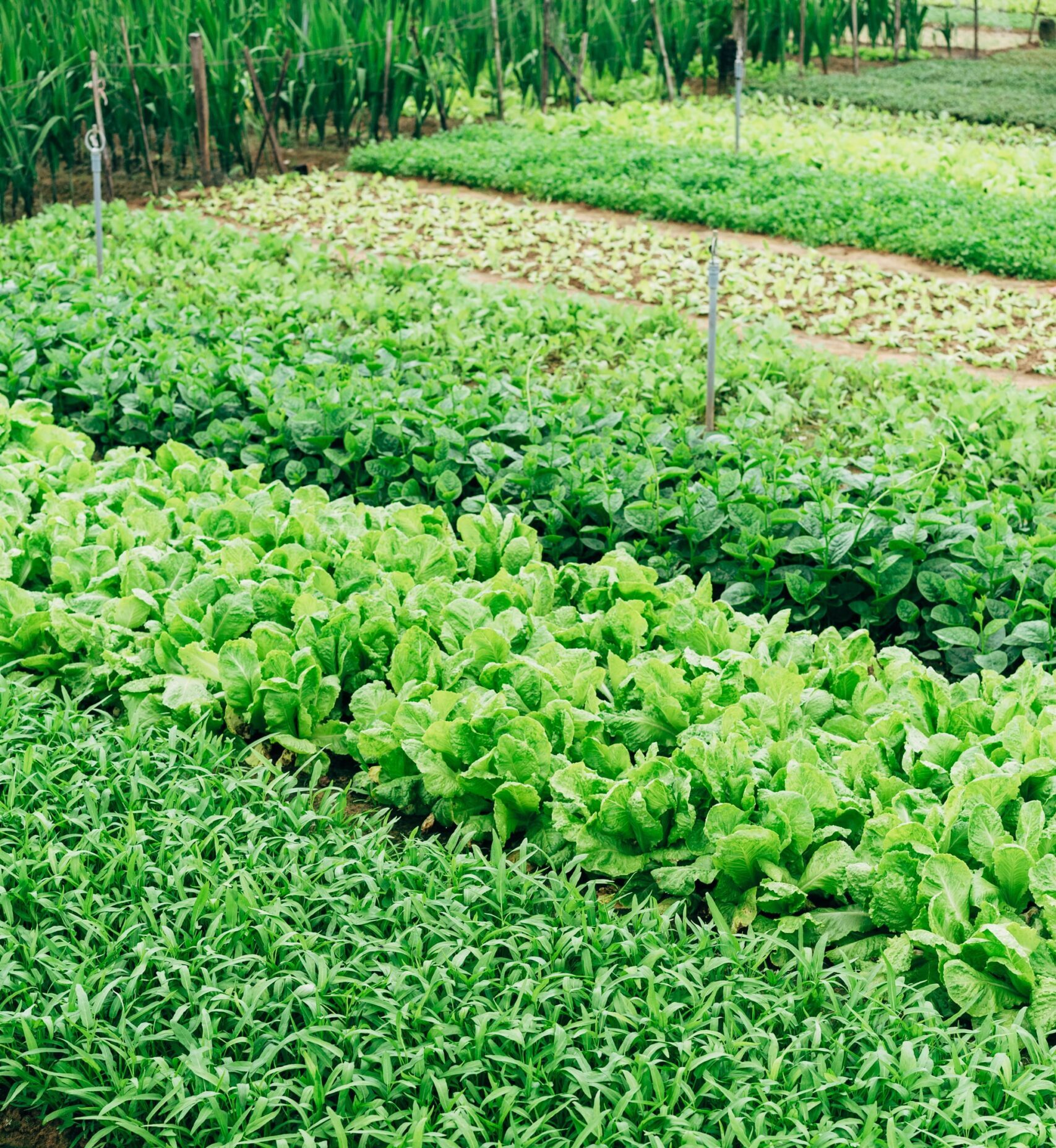Spring has officially sprung in the northern hemisphere! For some, that means it’s time to shove heavy boots & sweaters to the back of the closet, start drinking cold brew again, and put some air in those bike tires. If you have a yard of any kind, it’s probably the time of year when you gas up the lawnmower, or call your local landscaping service to help you get your lawn ready for the season.
But what if you didn’t have to mow the lawn at all throughout the spring and summer? Or at least, not much of it.
Enter edible landscaping, the utilization of both ornamental and food-producing plants as design features in a landscape. Think purple kale nestled in next to your favorite hydrangeas. A sprawling peach tree shading a small patio of lawn furniture, surrounded by berry bushes. A red currant hedge bordering your pink magnolias. Fruit trees, herbs, berries, nut trees, vegetables, and even edible flowers can all find their way into these designs. And you’ll see much, much less of the classic turf grass lawn.
The idea of edible landscaping is not new. The origins of the term can be traced back to 1980 and the landscape designer Robert Kourik. It was further popularized in 1982 by Rosalind Creasy with her publication, The Complete Book of Edible Landscaping. And now, as home gardening becomes more popular, edible landscaping is experiencing a boom as well, for a variety of reasons.
In the past year, higher food prices, supply chain anxiety, and a desire for food security has lead people back into their gardens. Additionally, with veganism on the rise, it seems that people increasingly want to know where their food comes from. If the basil in your homemade pesto sauce comes from the plant in your yard, you’ll have no doubt about its journey to get there. Plus, nothing tastes better than a tomato plucked from the vine just out your backdoor!
There are many environmental benefits to consider as well. Despite their persistence in suburbia, we know that most turf grass lawns are a detriment to our environment. They are often not native and thus need a lot of extra TLC to survive: constant irrigation, fertilizer, mowing, leaf blowing, pesticides, etc. These demanding, unnatural methods support a monoculture, non-native species in place of a diverse and natural landscape. Replacing turf grass with an ecologically varied, edible & ornamental array of species creates a bountiful habitat that has the potential to supports humans, as well as many other species.
So, if you decide to consider an edible landscape, does this mean your yard will soon look like an untamed jungle of vines and vegetation? Not at all! While it’s true that garden plots can sometimes start to look like chaos of The Princess Bride’s famed fire swamp, edible landscape design is a more integrated approach that includes the flow and aesthetics of traditional landscaping. Yards are intended to be multi-functional, aesthetically pleasing, and bountiful. A professional designer can help you piece together your vision, taking into account the space and how you hope to utilize it, while also considering the plants you want to eat and the visual appeal of your yard.
You also can choose plants based on your desired level of upkeep and maintenance. If you want to start digging in the dirt and sharpening your pruning shears daily, there will be ample opportunity (and necessity!) to do so. For example, celery is considered a more high maintenance vegetable that requires moist soil and lots of watering. However, if you’re looking for a slightly more hands-off approach, there are a multitude of plants that require less maintenance. Garlic is one of these much lower maintenance vegetables, requiring just a bit of sunlight and water to thrive.
If you’re headed into a full on yard transformation, it’s definitely helpful to consult a professional. It’s very likely there’s a local edible design specialist to meet your needs. However, if you want to get started with a little DIY, here are a few tips to get you going.
Find the sun: It’s a good idea to start with a small area of your yard and definitely one that gets a lot of sunlight. Most edibles need a lot of sun, and for those that don’t, it’s much easier to create shade than sunlight!
Draw up a plan: It is important to have a general idea of how you want your space to look. If you’re stuck, consider what other functions you want for the area. A gathering point, a meandering path, a meditative space? Get creative! It’s up to you!
Do your research: A good start is considering the climate you live in and looking up your Plant Hardiness Zone. You might also consider conducting a soil test, which also will tell which plants are most likely to thrive at your location.
Pick your plants: What’s your favorite flower? What berries do you want to be eating all summer? What fragrance puts you in an immediate good mood? Once you’ve done your research, you can start to decide what plants you will use to adorn your very own garden oasis or front yard food forest! Here’s a great list of plants to start with.
After that, prepare to spend a lot of time in the sunshine (or rain) and digging in the dirt and expect to learn a lot as you grow! However, when you’re polishing off the last of your freshly harvested summer salad while relaxing next to a bed of deep pink pansies and rainbow chard, it will all be worthwhile.
Get more like this—Sign up for our daily inspirational newsletter for exclusive content!
___
Photo: Pedro Ramos via Unsplash





